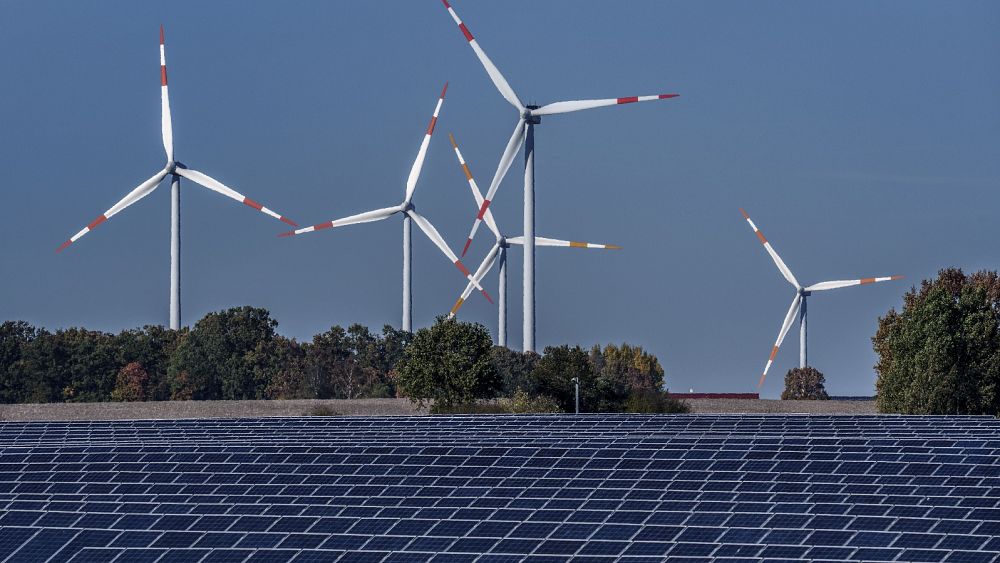
The European Union is on track to exceed its 2030 target for clean energy technologies, as the deployment of solar and heat pumps soared last year due to Russia’s war in Ukraine and the energy crisis it sparked, a new report has found.
Brussels pencilled in a 40% renewable energy target by 2030 in the Fit for 55 package it unveiled in summer 2021, but the 27-country bloc is not projected to reach 45%, according to a report released on Tuesday by Ember.
This is partly due to Russia’s invasion of Ukraine which started in February 2022, and which exacerbated an energy crisis across Europe, as European economies sought to wean themselves off Russian fossil fuels and Moscow stopped delivering gas to many countries.
In response, European countries “turbocharged” their energy transition, the independent energy think tank said, with investment in clean technologies jumping by nearly a third year-on-year to reach new record highs.
Such was the case for solar deployment, with more than 40 GW installed across the EU last year, a 47% increase on the previous year. Meanwhile, estimates put new capacity in 2023 at over 50 GW.
This exponential growth should see the Fit for 55 solar target reached four years early, in 2026, with Germany, Spain, Poland, Italy, the Netherlands and France seen as the countries that will add the largest amount.
Significant growth was also observed last year in both heat pumps and electric vehicles.
A record 3 million heat pumps were sold across the EU in 2022 — equivalent to roughly four billion cubic metres of natural gas. This brought the total stock to about 20 million, attaining an interim objective set for 2026.
Projections now put the number of heat pumps installed by 2030 at between 60-72 million, significantly higher than the 40 million units modelled in the Fit for 55 package.
Meanwhile, sales of electric vehicles continued to climb despite a challenging year for car sales in general. The automotive industry is now confident that it can achieve the transport electrification target, which plans for a fivefold increase between now and 2030.
Unlike wind, solar did not defy expectations last year and new onshore capacity installed actually came in below the Fit-for-55 target, despite a 40% increase on the previous year. The outlook for offshore wind is more positive as projects under development would add 70.5 GW capacity, close to a new interim target set earlier this year of 111 GW by the end of the decade.
For Ember, the positive trends observed over the past 12 months should prompt the EU to revise its targets upwards.
“A new energy reality has unfolded across Europe since the Fit-for-55 package was presented eighteen months ago, with record-breaking clean energy investments reflecting the security and economic imperatives for increasing renewables,” Elisabeth Cremona, an Ember energy and climate data analyst, said.
“Clean technologies are forecast to outpace Fit-for-55 expectations, putting the EU on course for at least 45% renewables by 2030. As 40% renewables no longer reflects where we are heading, sticking with the lower target means aiming for failure,” she added.
Both the European Commission and Parliament have indicated they are in favour of boosting targets ahead of final negotiations on the EU’s renewable energy target for 2030 scheduled to take place in March. But some member states would prefer the target to remain unchanged at “at least 40%.”

